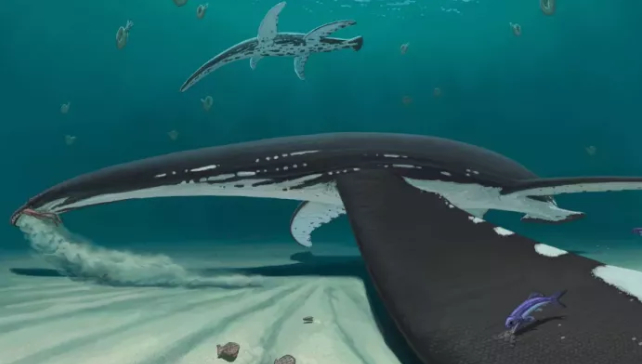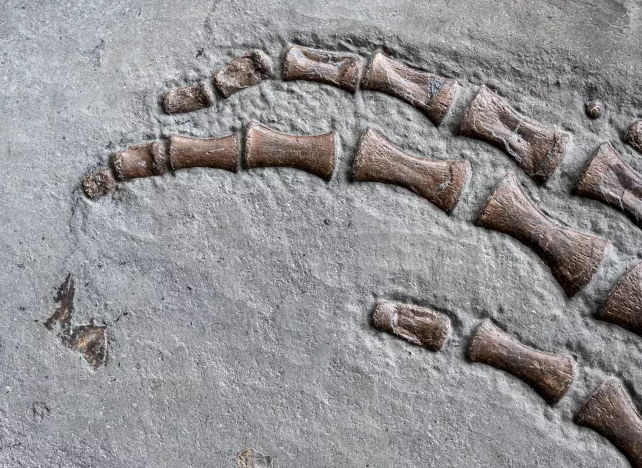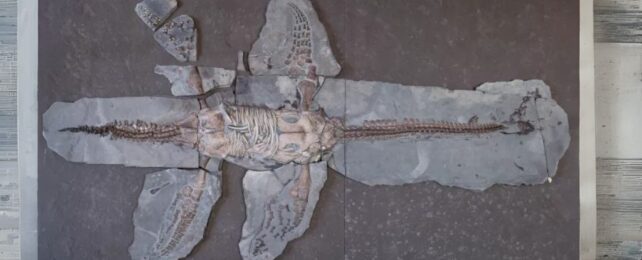Serpentine-necked, four-flippered plesiosaurs were among the most successful marine predators in the time of dinosaurs.
A remarkably complete and well-preserved fossil has revealed that at least some of these mighty hunters had flipper scales similar to today's sea turtles, which may have aided in either swimming or dragging themselves along the seafloor.
While plesiosaur fossils have been found worldwide, only about eight samples of their soft tissues have been recorded so far.
Lund University paleontologist Miguel Marx and colleagues' new analysis uses microscopy and spectroscopy to provide never-before-known details of what these animals looked like.

These fossilized bones belonged to a roughly 4.5-meter-long plesiosaur that swam Earth's oceans 183 million years ago, during the Jurassic, when plesiosaurs were especially common, the team confirmed.
Designated MH 7, they were excavated from Holzmaden in Germany back in 1940, then spent some time buried in a museum garden for protection during WWII, followed by long-term storage.
Plesiosaurs bore live babies and breathed air, traits that suggest they may have been warm-blooded. And while the skin from this fossil's tail was smooth like today's warm-blooded marine animals, a sample from the right fore flipper revealed small irregular triangular structures.
The researchers compared the fossilized skin samples to animals still living today.
"[The flippers] clearly differ from the soft, scale-less skin occurring around the tail of MH 7 and instead compare closely with carapace scutes of fossil and living turtles, as well as mosasauroid marine lizard scales," they write in their paper.
As well as the scales, the thickness of their skin was also comparable to living sea turtles.

These anatomical features may have evolutionarily converged towards similar shapes thanks to shared hydrodynamic pressures, the team suspects, or to help provide traction on the seafloor substrate.
"Another purpose of the flipper scales in MH 7 may have been to provide a protective covering for traction on the seafloor during benthic grazing," add the researchers.
"This is consistent with plesiosaur 'bottom-walking' and feeding traces as well as preserved gastric contents which comprise coarse sediment masses."
Several species have been found with fossilized gut contents full of bottom-dwelling snails and crustaceans.
Pigment cells were also found close to the outer surface of MH 7's tail skin, but not on the surface of the flipper, which is much tougher.
"These cells are characterized by corneous beta-proteins that make living reptile scales hard and immobile," Marx and team explain.
So it seems plesiosaurs retained their reptilian scales after transitioning from land into their marine form, unlike other marine reptiles at the time, such as the more fish-shaped ichthyosaurs, that instead lost their scales to reduce drag in water.
The scales "along the trailing edges of the flippers undoubtedly fulfilled some functional role and presumably conferred a selective advantage for plesiosaurs during their protracted evolution as one of the most successful pelagic tetrapod clades," the researchers conclude.
This research was published in Current Biology.
